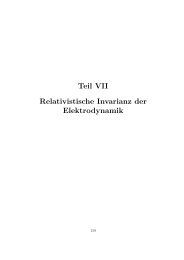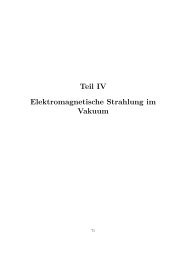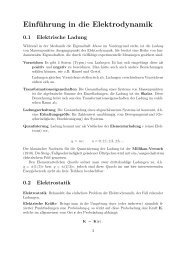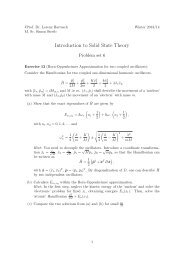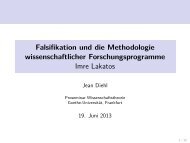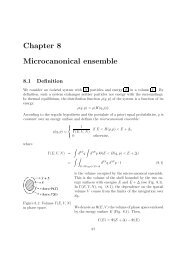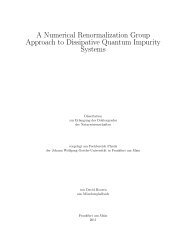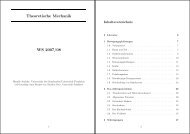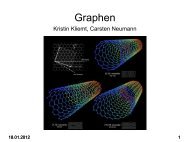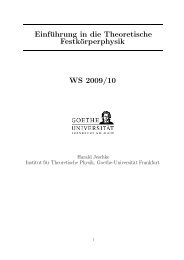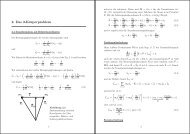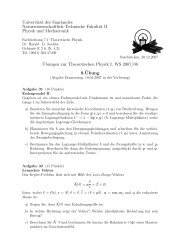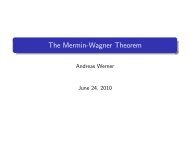Microscopic Modelling of Correlated Low-dimensional Systems
Microscopic Modelling of Correlated Low-dimensional Systems
Microscopic Modelling of Correlated Low-dimensional Systems
You also want an ePaper? Increase the reach of your titles
YUMPU automatically turns print PDFs into web optimized ePapers that Google loves.
Abstract<br />
The characterization <strong>of</strong> microscopic properties in correlated low-<strong>dimensional</strong> materials is<br />
a challenging problem due to the effects <strong>of</strong> <strong>dimensional</strong>ity and the interplay between the<br />
many different lattice and electronic degrees <strong>of</strong> freedom. Competition between these factors<br />
gives rise to interesting and exotic magnetic phenomena. An understanding <strong>of</strong> how these<br />
phenomena are driven by these degrees <strong>of</strong> freedom can be used for rational design <strong>of</strong> new<br />
materials, to control and manipulate these degrees <strong>of</strong> freedom in order to obtain desired<br />
properties. In this work, we study these effects in materials with small exchange interaction<br />
between the magnetic ions such as metal-organic and inorganic dilute compounds. We<br />
overcome the difficulties in studying these kind <strong>of</strong> materials by combining classical and<br />
quantum mechanical ab initio methods and many-body theory methods in an effective<br />
theoretical approach. To treat metal-organic compounds we elaborate a novel two-step<br />
methodology which allows one to include quantum effects while reducing the computational<br />
cost. We show that our approach is an effective procedure, leading at each step, to additional<br />
insights into the essential features <strong>of</strong> the phenomena and materials under study.<br />
Our investigation is divided into two parts, the first one concerning the exploration <strong>of</strong> the<br />
fundamental physical properties <strong>of</strong> novel Cu(II) hydroquinone-based compounds. We have<br />
studied two representatives <strong>of</strong> this family, a polymeric system Cu(II)-2,5-bis(pyrazol-1-yl)-<br />
1,4-dihydroxybenzene (CuCCP) and a coupled system Cu2S2F6N8O12 (TK91). The second<br />
part concerns the study <strong>of</strong> magnetic phenomena associated with the interplay between<br />
different energy scales and <strong>dimensional</strong>ity in zero-, one- and two-<strong>dimensional</strong> compounds.<br />
In the zero-<strong>dimensional</strong> case, we have performed a comprehensive study <strong>of</strong> Cu4OCl6L4<br />
with L=diallylcyanamide=N≡C-N-(CH2-CH=CH2)2 (Cu4OCl6daca4). Interpretations <strong>of</strong><br />
the magnetic properties for this tetrameric compound have been controversial and incon-<br />
sistent. From our studies, we conclude that the common models usually applied to this<br />
and other representatives in the same family <strong>of</strong> cluster systems fail to provide a consistent<br />
iv



